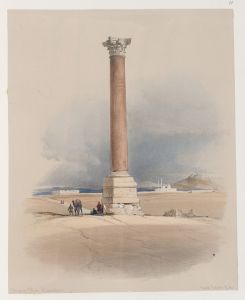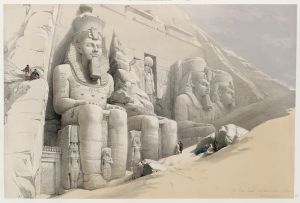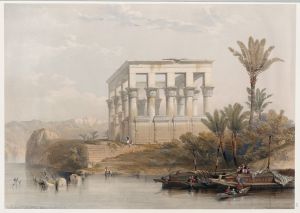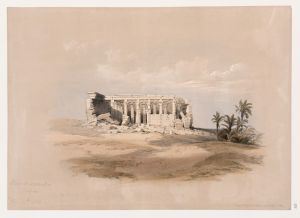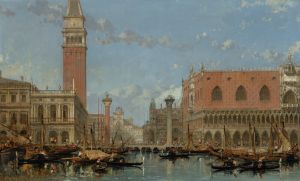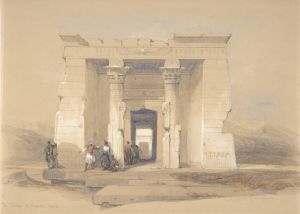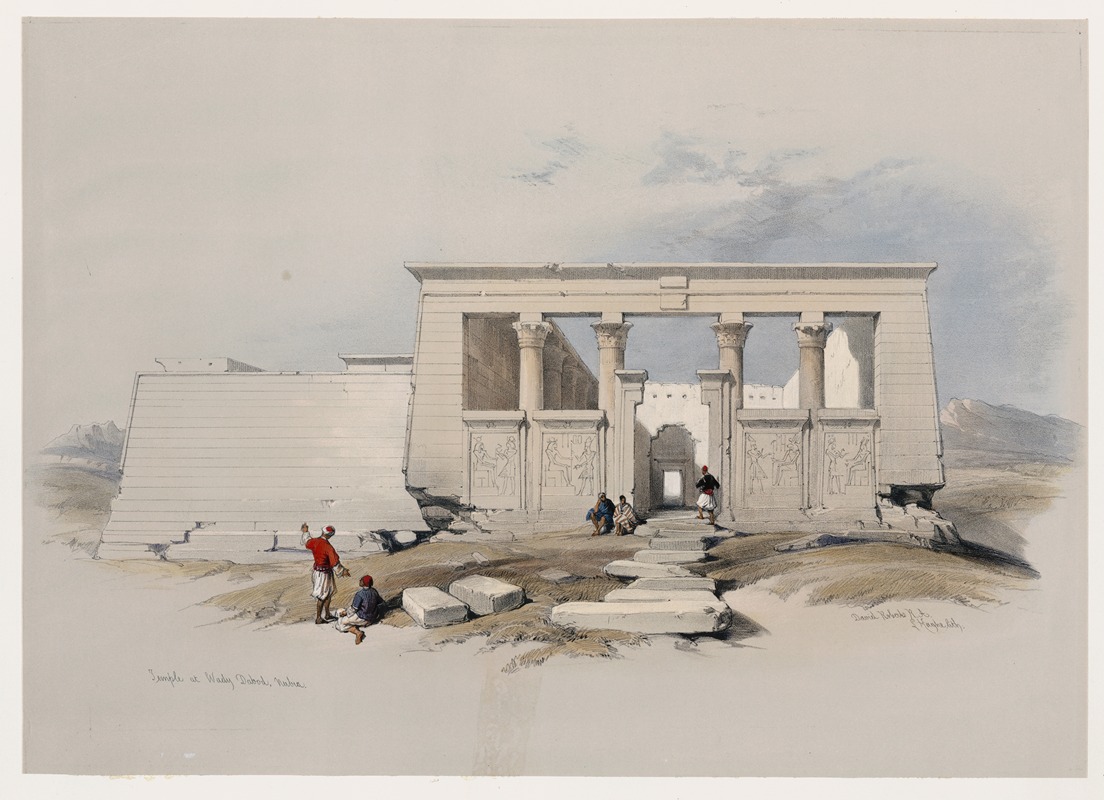
Temple at Wady Dabod [Wadi Dâbûd], Nubia.
A hand-painted replica of David Roberts’s masterpiece Temple at Wady Dabod [Wadi Dâbûd], Nubia., meticulously crafted by professional artists to capture the true essence of the original. Each piece is created with museum-quality canvas and rare mineral pigments, carefully painted by experienced artists with delicate brushstrokes and rich, layered colors to perfectly recreate the texture of the original artwork. Unlike machine-printed reproductions, this hand-painted version brings the painting to life, infused with the artist’s emotions and skill in every stroke. Whether for personal collection or home decoration, it instantly elevates the artistic atmosphere of any space.
David Roberts' painting "Temple at Wady Dabod [Wadi Dâbûd], Nubia" is a notable work that captures the essence of 19th-century Orientalist art. David Roberts, a Scottish painter born in 1796, is renowned for his detailed and romanticized depictions of the Middle East and North Africa. His works are significant for their historical and cultural insights into the regions he visited during his travels.
The painting "Temple at Wady Dabod" is part of Roberts' extensive collection of lithographs and paintings that document his journey through Egypt and Nubia between 1838 and 1839. This particular piece illustrates the Temple of Dabod, an ancient Egyptian temple originally located in Lower Nubia, near Aswan. The temple was dedicated to the goddess Isis and the god Amun, and it dates back to the 2nd century BC, during the reign of Ptolemy VI.
Roberts' depiction of the temple is characterized by his attention to architectural detail and the dramatic use of light and shadow, which were hallmarks of his style. The painting captures the temple's grandeur amidst the stark Nubian landscape, highlighting the contrast between the ancient structure and its natural surroundings. This approach not only emphasizes the temple's historical significance but also evokes a sense of timelessness and mystery.
The Temple of Dabod itself has an interesting history. It was originally built by the Kushite king Adikhalamani and later expanded by subsequent rulers, including the Roman emperors Augustus and Tiberius. The temple complex included a small chapel, a pronaos, and a processional way, all of which were adorned with intricate carvings and hieroglyphs. These features are often highlighted in Roberts' work, showcasing his dedication to capturing the authenticity of the sites he visited.
In the early 20th century, the construction of the Aswan High Dam threatened many ancient monuments in Nubia, including the Temple of Dabod. In recognition of Spain's assistance in saving the Abu Simbel temples, the Egyptian government gifted the Temple of Dabod to Spain in 1968. It was subsequently dismantled and reconstructed in Madrid, where it remains a popular historical site.
Roberts' paintings, including "Temple at Wady Dabod," played a crucial role in shaping Western perceptions of the Middle East and North Africa during the 19th century. His works were widely circulated in Europe, thanks to the lithographs produced by Louis Haghe, a Belgian engraver who collaborated with Roberts. These lithographs brought the exotic and ancient worlds of Egypt and Nubia to a European audience, fueling interest in Egyptology and the broader Orientalist movement.
In summary, David Roberts' "Temple at Wady Dabod [Wadi Dâbûd], Nubia" is a significant artistic work that offers a glimpse into the rich history and culture of ancient Nubia. Through his detailed and evocative portrayal of the Temple of Dabod, Roberts not only documented an important historical site but also contributed to the 19th-century fascination with the ancient world.





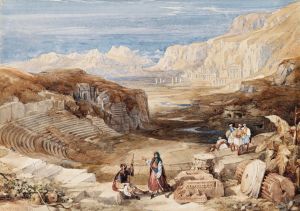
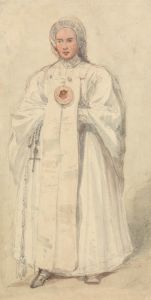
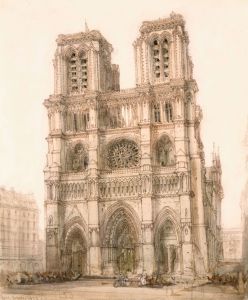
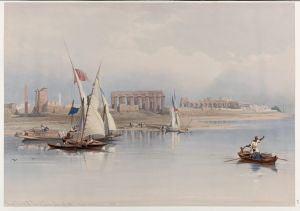

![Karnac [Karnak]. Nov. 27, 1838.](/imgs/217501/s/david-roberts-karnac-karnak-nov-27-1838-2ea4b2c4.jpg)
